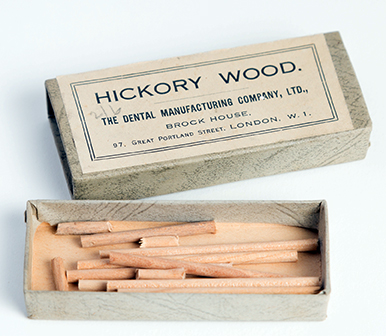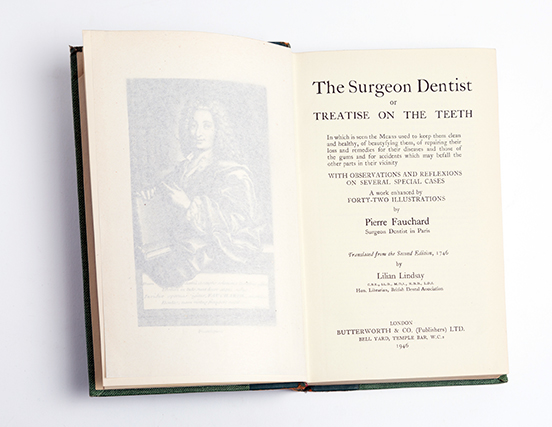An interest in the structure and anomalies of teeth can be traced back to the writings of the Ancient Greek physician Hippocrates (460-370BC) and the philosopher Aristotle (384-322BC). An interest continued into the Roman medical writers and Aulus Cornelius Celsus (c.25BC-50AD) Claudius Galenus (130-200). Celsus recommended finger pressure for the correction of permanent teeth and Galenus was the first to describe treatment measures for irregular teeth, such as filing down teeth in cases of a lack of space.
The writings of Galenus dominated medical thought until the 15th century AD. The Renaissance saw an increased interest in the anatomy of the human body. The Italian polymath Leonardo da Vinci, the Belgian physician Andreas Vesalius and the French Surgeon Ambrose Paré all wrote about the anatomy and function of teeth in the 16th century. Paré had a particular interest in dentofacial anomalies and was the first to develop an obturator for treatment. The first dental textbook Artzney Buchlein was published in 1530.
In 1728 the French dentist Pierre Fauchard published his work Le Chirugien Dentiste. It was the first work to base dentistry on a scientific basis and had two chapters dedicated to badly aligned teeth.
Fauchard also described the first orthodontic appliance, called a bandolet. It was a silver or gold band designed to expand the arch. The arch was attached to the teeth by waxed silk ligatures which also applied pressure to the teeth.
Several other French dentists followed Fauchard. Robert Bunon (1702-1788) recommended serial extraction for overcrowding. A treatment advocated by Etienne Bourdet (1722-1789) who also developed Fauchard’s appliances.
John Hunter (1728-1793) was an influential English anatomist and surgeon. His work The Natural History of Teeth (1771) set dentistry on a scientific basis. He published descriptions on the anatomy and growth of the teeth and the development of the jaws based on his own research and experiments. Hunter supported preventive mixed dentition treatment for irregular teeth.
Hunter’s student, Joseph Fox (1776-1816) advocated serial extraction of the deciduous teeth. Fox developed a treatment for an anterior cross bite consisting of a gold or silver arch with ivory block bites. Teeth were drawn labially towards the arch with silk threads, which had to be adjusted every three days. He also developed a leather chin cap to prevent luxation of the jaw after extraction of the teeth.
The extract debate dates back to this time too. In 1815 C .F. Delabarre rejected the premature extraction of deciduous teeth, emphasizing their role as space maintainers. He was one of the first to attempt to systemize occulusal anomalies and he developed his own designs of appliances.
Thomas Bell also rejected Fox’s recommendation of extraction. His ideas were similar to Delabarre’s but Bell maintained he had developed them prior to Delabarre. One of Bell’s appliances was a cast brass bar extended to the premolars and tightly fit to the anterior teeth on the labial side for the treatment of an anterior cross bite.
In 1836 a German dentist, Frederich Christoph Kneisel, published the first specialized orthodontic essay Der Schiefstand der Zähne. In it he classified the anomalous positions of the teeth as partial and general obliqueness. He attributed the causes to hereditary factors, lack of exercise in the jaws in childhood and nursing difficulties. Kneisel used ligatures and gold springs to adjust the position of the teeth.
In 1841 J.M. Alexis Schange published his classification of occlusal anomalies which was based on the earlier work of Jean Nicholas Marjolin. Schange was the first to recommend the use of screws to eliminate protrusion and elastic bands for rotating individual teeth. He was also the first to recommend long-term mechanical immobilization to retain the results achieved. This was revolutionary at the time as most treatment only lasted about three months.
In 1859 Sir John Tomes published A System of Dental Surgery. In it he referred to the work of his friend William Anthony Harrison who recommended the use of ivory plates and swelling wooden wedges. Tomes preferred the use of metal plates with silk ligatures. He also recommended the use of head chin caps to eliminate open bites.
The museum collection contains some objects used in early orthodontics:

Ivory upper removable appliance with four holes for the insertion of pegs

Box of hickory wood posts

Pierre Fauchard's 'The Surgeon Dentist' 1728, translated by Lilian Lindsay (1946)

The Natural History of the Human Teeth by J. Fox, 1803
For developments since 1860, please see the Timeline on orthodontics since 1860.